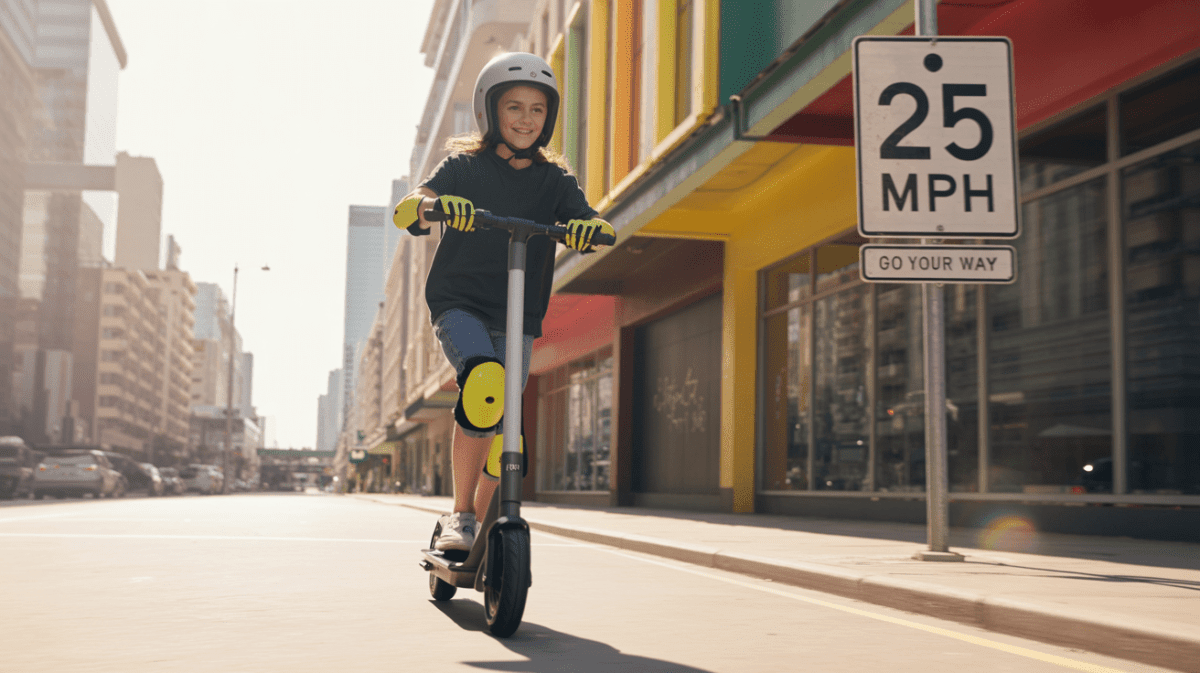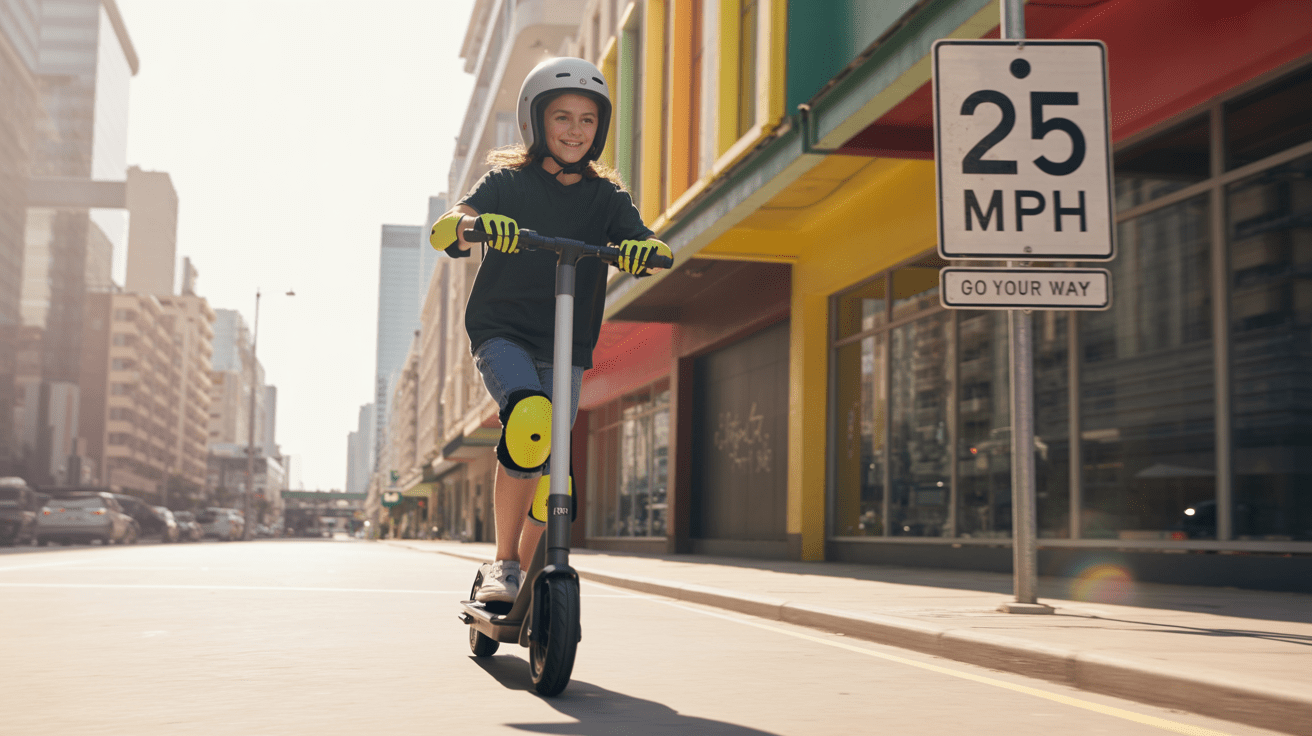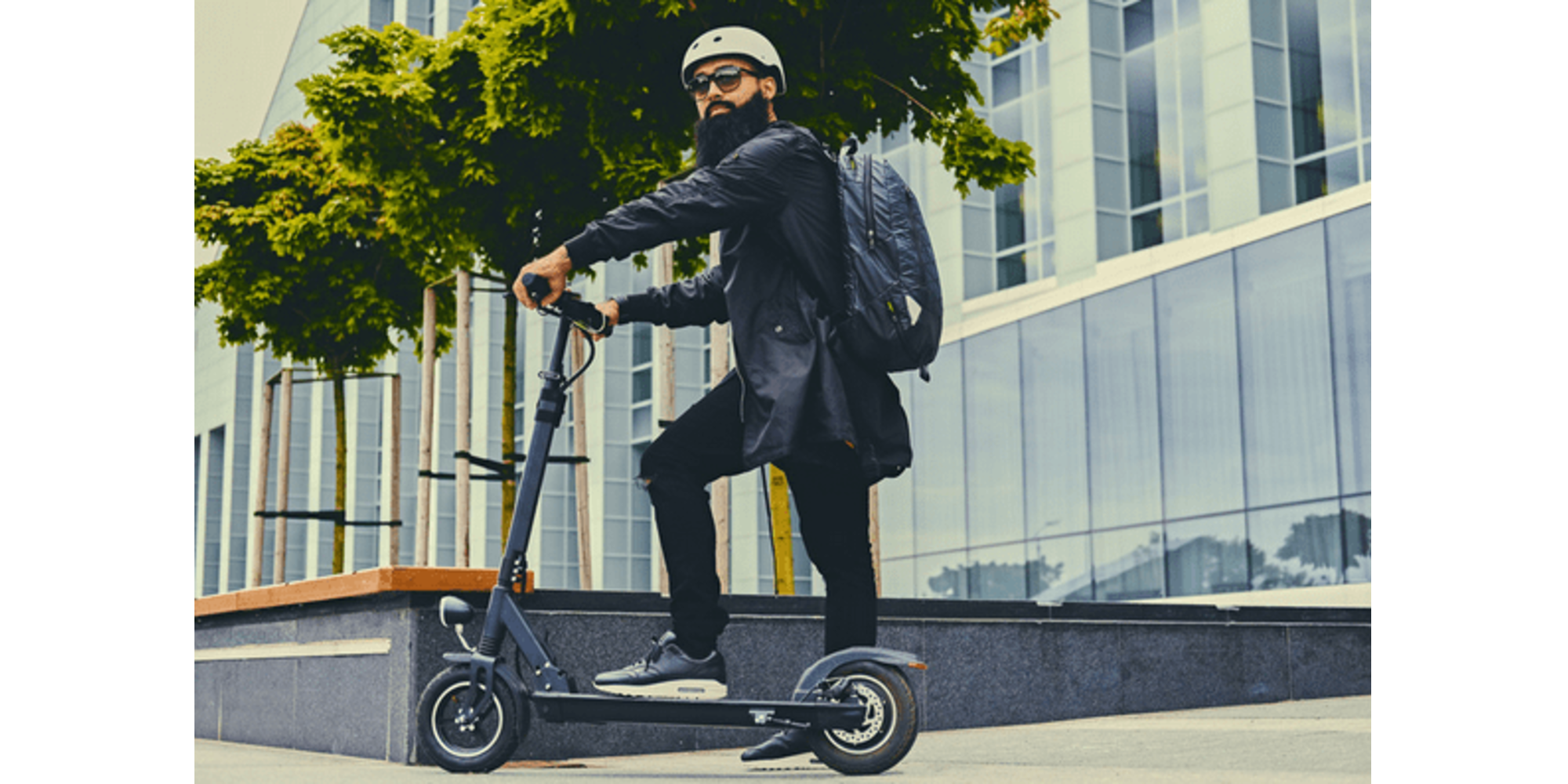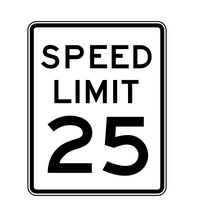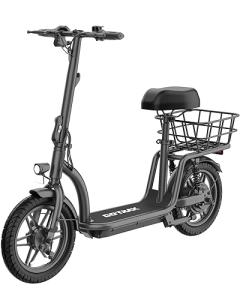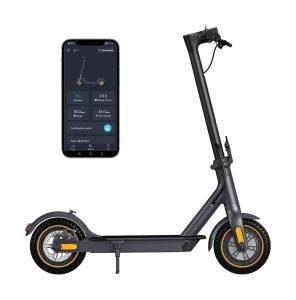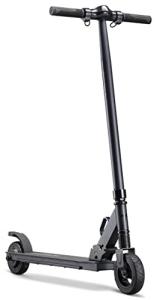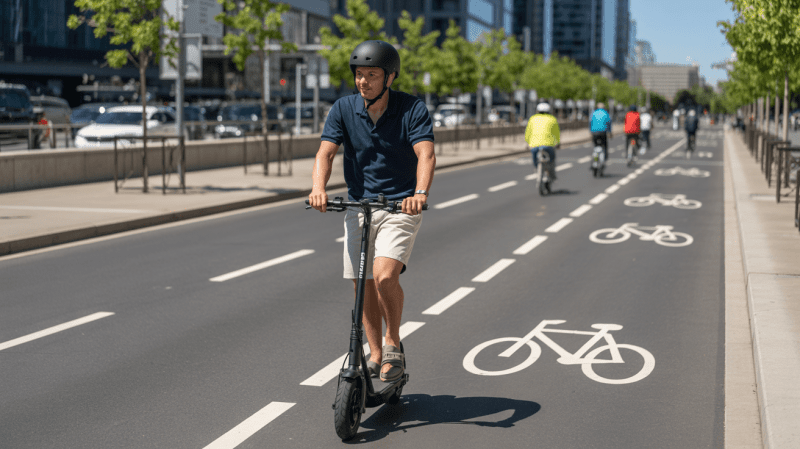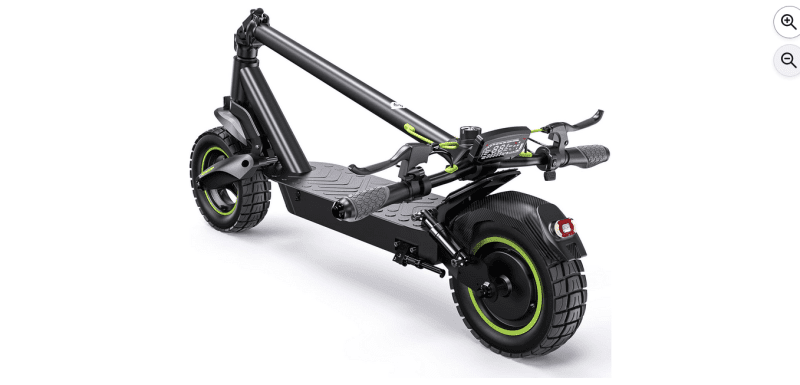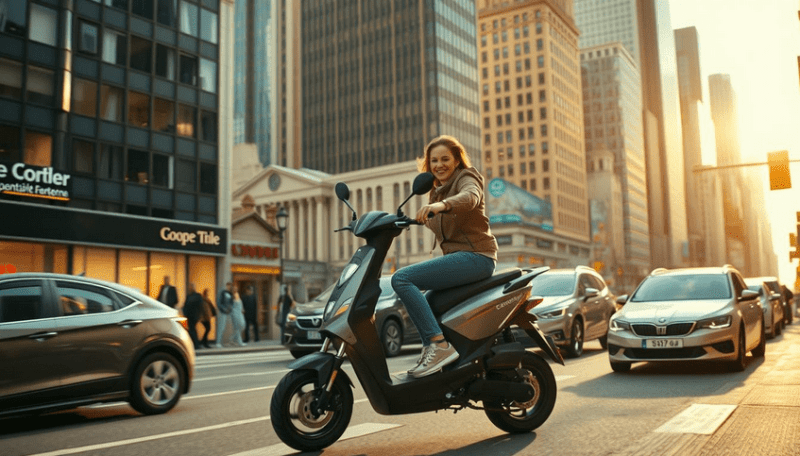Are you considering buying an electric scooter? Before you hit the road at top speed, it's important to understand the legalities and safety measures surrounding electric scooter speed limits. In this comprehensive guide, we'll walk you through everything you need to know to stay safe and legal on your electric scooter adventures.
From city streets to bike lanes, electric scooters have become a popular mode of transportation for commuters and fun-seekers alike. But did you know that each state and country has its own rules and regulations when it comes to electric scooter speed limits? It's crucial to familiarize yourself with these laws to avoid fines or risking your safety.
We'll delve into the specifics of electric scooter speed limits, including common legal requirements and restrictions, as well as tips to ensure you're riding responsibly. We'll also discuss how to maintain your electric scooter's speed control and understand the factors that can affect your scooter's overall speed.
Whether you're a seasoned electric scooter rider or a beginner, this ultimate guide will equip you with the knowledge and tools to navigate the roads confidently and responsibly. So let's dive in and discover how to maximize your electric scooter experience while adhering to the necessary speed limits.
Understanding Electric Scooter Speed Limits
Electric scooters have surged in popularity over the past few years, offering an eco-friendly and efficient mode of transportation. However, with this rise in usage comes the necessity to understand the speed limits that govern their operation. Speed limits for electric scooters can vary significantly based on jurisdiction, intended use, and scooter specifications. Typically, these limits are established to ensure the safety of riders and pedestrians alike, preventing accidents that can arise from excessive speed.
In most urban environments, electric scooters are subject to specific speed regulations, often capping speeds between 15 to 20 miles per hour (24 to 32 kilometers per hour). These limits are designed to keep riders safe while ensuring they can navigate through crowded areas without posing a risk to themselves or others. Understanding these limits is crucial for anyone looking to ride an electric scooter, as violations can lead to fines, legal consequences, and increased risk of injury.
Moreover, speed limits can also differ based on where you are riding your scooter. For instance, bike lanes may have different regulations compared to regular streets or pedestrian zones. It's essential for riders to familiarize themselves with local laws and ordinances to ensure they are compliant. This knowledge not only protects riders from legal repercussions but also enhances the overall safety of the riding experience.
Why Electric Scooter Speed Limits Are Important
Establishing speed limits for electric scooters is fundamental for several reasons. First and foremost, safety is a primary concern. High speeds can increase the likelihood of accidents, posing risks not just to the rider but also to pedestrians and other road users. In busy urban areas, where scooters often share space with pedestrians and cyclists, maintaining a reasonable speed can significantly reduce the chance of collisions and injuries.
Additionally, speed limits help to promote responsible riding behaviors. When riders know the maximum speed allowed, they are more likely to exercise caution and remain attentive to their surroundings. This awareness fosters a culture of safety and respect within communities, encouraging riders to consider the implications of their speed on others sharing the road. By adhering to speed limits, riders contribute to a safer environment for everyone.
Lastly, speed regulations can also minimize nuisance complaints from residents and businesses. Excessive speeds can lead to noise, disruption, and a general sense of chaos in public spaces. By enforcing speed limits, local governments can help ensure that electric scooters remain a welcomed part of the transportation ecosystem rather than a source of frustration for those who live or work nearby. This balance between mobility and community well-being is essential for the sustainable integration of electric scooters into urban life.
Different Types of Electric Scooter Speed Limits
Electric scooter speed limits can be categorized into various types, each designed to address specific contexts and environments. One of the most common types is the statutory speed limit, which is set by local or national laws governing the operation of electric scooters. These limits typically apply to all riders and are enforced uniformly across designated areas, such as roads, bike lanes, and pedestrian zones.
Another category is the manufacturer-imposed speed limit. Many electric scooters come equipped with built-in speed controls that limit the maximum speed a scooter can achieve. These limits are often set based on the scooter's design and specifications to ensure safe operation. For instance, a scooter designed for urban commuting may have a lower limit than a high-performance model intended for off-road use. Riders should familiarize themselves with their scooter's capabilities and limitations to operate within safe parameters.
Moreover, there are adaptive speed limits that vary based on specific conditions. For example, some cities implement dynamic speed limits that change according to the time of day or traffic conditions. Speed limits may be reduced during peak hours to accommodate increased foot traffic, while off-peak hours may allow for higher speeds. Understanding these adaptable limits is crucial for riders who want to stay compliant while navigating various environments.
Factors That Affect Electric Scooter Speed Limits
Several factors can influence the speed limits imposed on electric scooters, including location, design, and rider behavior. One significant factor is the environment in which the scooter is being operated. Urban areas with high pedestrian traffic typically enforce stricter speed limits to ensure the safety of all road users. Conversely, rural areas or designated bike paths may allow for higher speeds due to lower pedestrian density and reduced traffic.
The type of electric scooter also plays a crucial role in determining speed limits. Scooters designed for recreational purposes often feature higher speed capabilities, while those intended for commuting may be limited to lower speeds for safety reasons. Additionally, the weight capacity and battery performance can affect a scooter's speed. Heavier loads may lead to reduced acceleration and speed, while well-maintained batteries can enhance performance.
Lastly, rider experience and behavior significantly contribute to safe scooter operation. Inexperienced riders may struggle to control their speed effectively, leading to dangerous situations. Education and awareness campaigns are essential in promoting responsible riding practices, encouraging users to understand their scooters' limitations and the importance of adhering to speed regulations. By considering these factors, riders can make informed decisions regarding their speed and enhance their overall safety on the road.
Tips for Staying Safe and Legal While Riding an Electric Scooter
Staying safe and legal while riding an electric scooter involves knowledge, preparation, and responsible behavior. First, it's essential to stay informed about local laws and speed limits specific to your area. Many cities provide resources online where riders can access information about electric scooter regulations, including speed limits, designated riding areas, and any necessary permits. Familiarizing yourself with this information will help you avoid potential fines and enhance your riding experience.
Wearing appropriate safety gear is another critical aspect of responsible riding. Helmets, knee pads, and elbow pads can significantly reduce the risk of injury in case of an accident. While some areas may not legally require riders to wear helmets, it is always wise to prioritize your safety. Additionally, ensuring your scooter is in good working condition before each ride is essential. Regular maintenance checks, including tire pressure, brakes, and lights, can prevent mechanical failures that could lead to accidents.
Finally, practicing defensive riding techniques can help you navigate the roads more safely. This includes knowing your surroundings, signaling your intentions, and maintaining a safe distance from other vehicles and pedestrians. Avoid riding on sidewalks where prohibited, as this can create pedestrian hazards. By cultivating a mindset of caution and awareness, riders can greatly reduce their risk of accidents while enjoying their electric scooter rides.
How to Check and Adjust the Speed Limit on Your Electric Scooter
Many electric scooters have features that allow riders to check and adjust their speed limits. The first step to managing your scooter's speed is to consult the user manual. This document typically provides detailed instructions on accessing speed settings and any available modes that can limit your scooter's maximum speed. Some scooters have a simple dashboard display that shows your current speed and may allow you to switch between different riding modes.
Look for a mode selector or speed setting feature to adjust the speed limit. Depending on the scooter model, this may involve pressing a combination of buttons or accessing a mobile app. Riders can often choose between different performance modes, such as eco, normal, or sport, each with varying speed limits. For instance, the eco mode usually restricts scooters to a lower speed to conserve battery energy and enhance safety.
Moreover, keeping your scooter's firmware updated can also impact its speed settings. Manufacturers often release firmware updates that can improve performance and safety features. Regularly checking for updates and installing them can ensure your scooter operates optimally. By taking the time to understand and adjust your scooter's speed settings, you can ensure a safer and more enjoyable riding experience.
Electric Scooter Speed Limit Regulations in Different Countries
Electric scooter regulations can vary widely from one country to another, reflecting each location's unique approach to managing this growing mode of transport. For instance, in the United States, regulations are primarily determined at the state and local levels, leading to a patchwork of laws. Some states allow electric scooters to operate in bike lanes with speed limits ranging from 15 to 20 miles per hour, while others have stricter regulations, including age restrictions and licensing requirements.
In Europe, the approach to electric scooter regulation is often more standardized. Many European countries have established specific laws governing electric scooters, typically capping their speed at 15.5 miles per hour (25 kilometers per hour). Countries like France and Germany have detailed regulations that include insurance requirements, mandatory helmet use, and restrictions on riding on sidewalks. These laws aim to ensure rider safety while integrating electric scooters into existing traffic systems.
In contrast, countries like Japan have been slower in adopting electric scooters, with stringent regulations that classify them as motor vehicles, thus requiring licensing and registration. Understanding these international variations is crucial for travelers or expatriates who wish to ride electric scooters in different countries. By knowing the local laws and regulations, riders can ensure compliance and enjoy their electric scooter experiences without legal complications.
Common Misconceptions About Electric Scooter Speed Limits
Despite the growing popularity of electric scooters, several misconceptions persist regarding their speed limits. One common misunderstanding is that all electric scooters are identical and should adhere to a uniform speed limit. In reality, various models possess different speed capabilities based on their design and intended use. Some scooters are built for high-performance riding, while others prioritize safety and ease of use, leading to varying speed limits across the board.
Another misconception is that speed limits do not apply when riding in less populated areas. Many riders mistakenly believe that they can exceed speed limits in rural or open spaces. However, speed regulations are often in place regardless of the riding environment, and local laws typically govern all scooter operations. Ignoring these laws can result in fines and jeopardize rider safety, regardless of location.
Lastly, some riders think wearing safety gear is unnecessary if riding at low speeds. This belief can be dangerous, as even low-speed accidents can lead to significant injuries. Protective gear, such as helmets and pads, should always be worn to mitigate risks. Educating yourself and others about these misconceptions is essential for promoting responsible riding practices and ensuring a safer environment for everyone.
Conclusion: Enjoying Electric Scooters Responsibly
As electric scooters continue to gain traction as a preferred mode of transportation, understanding and adhering to speed limits becomes increasingly vital. By familiarizing yourself with local laws, practicing safe riding behaviors, and maintaining your scooter, you can enjoy a fulfilling riding experience while prioritizing safety. Responsible riding protects you, contributes to the overall safety of your community, and helps foster a positive perception of electric scooters.
Additionally, staying informed about the latest regulations and best practices will empower you to navigate the evolving landscape of electric scooter usage. As cities adapt to this form of transport, regulations may change, and being proactive in your understanding of these changes will keep you in compliance and enhance your riding experience.
Ultimately, electric scooters have the potential to revolutionize urban mobility, offering a convenient, eco-friendly option for getting around. By embracing responsible riding practices and respecting speed limits, you can fully enjoy the benefits of electric scooters while ensuring a safe and legal experience for yourself and others on the road.
DISCLAIMER
This document is provided for general information purposes only and should not be relied upon as providing legal advice, technical, or specific operational guidance to the reader, whether as to the practices described in the document or the applicable legal requirements and regulations.JUSTSCOOTERS.COM expressly disclaims any responsibility for liability arising from or related to the use or misuse of any information in this document.
